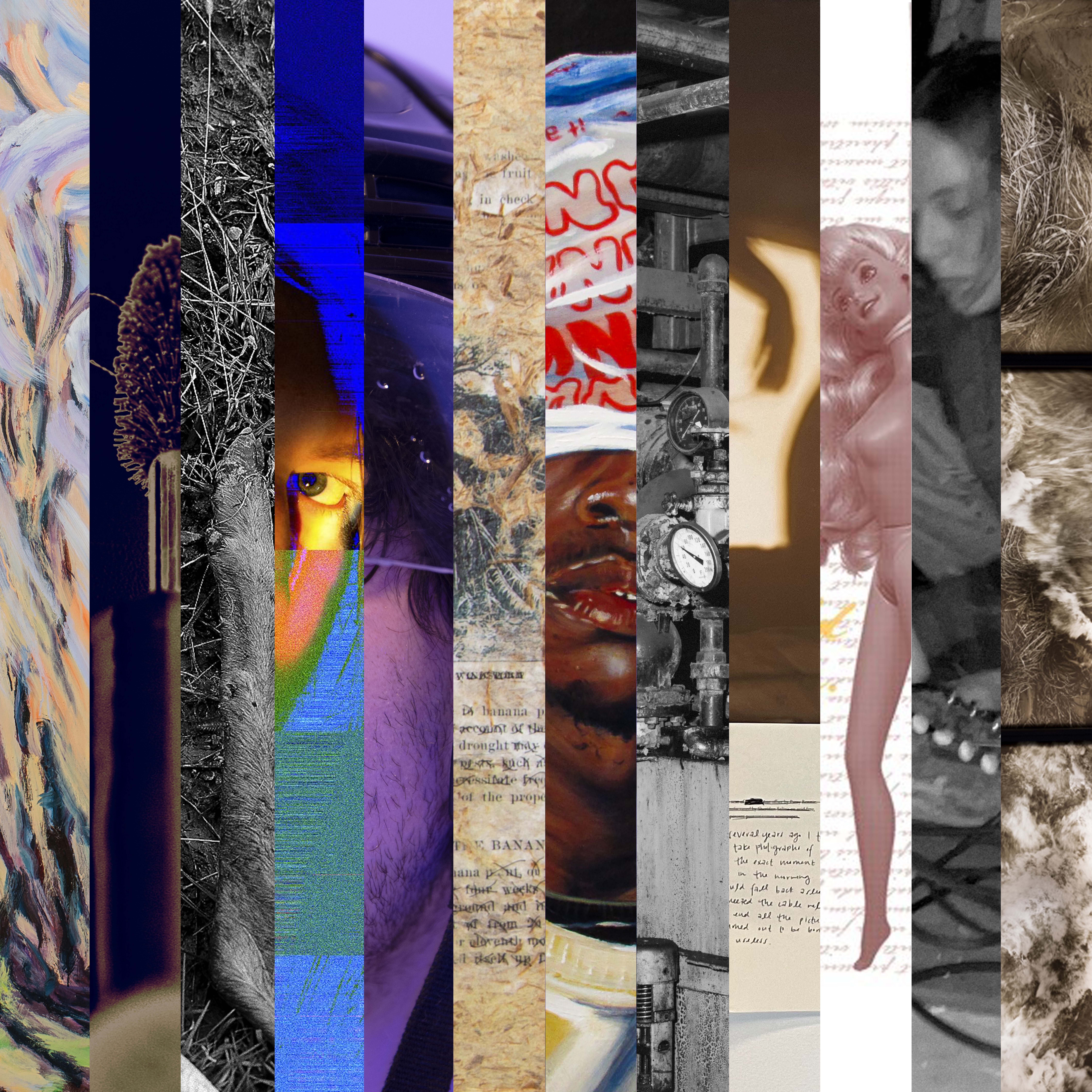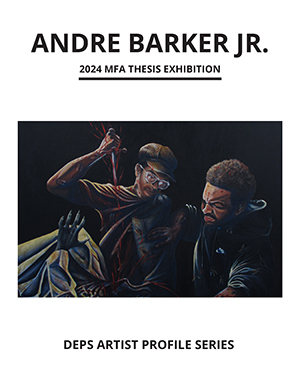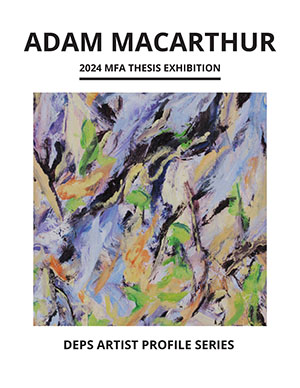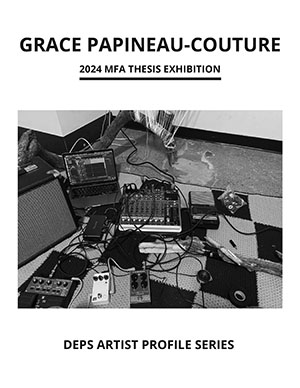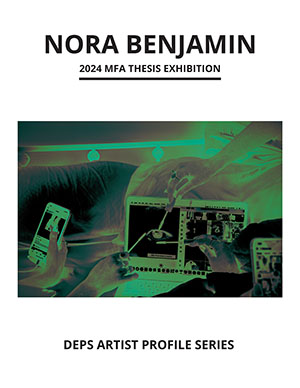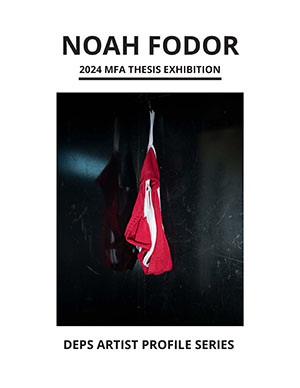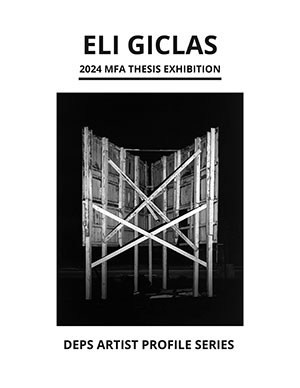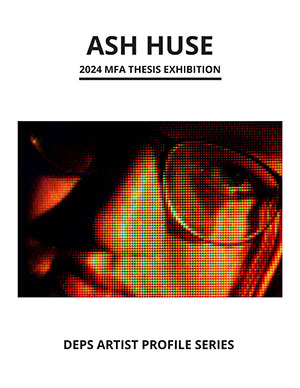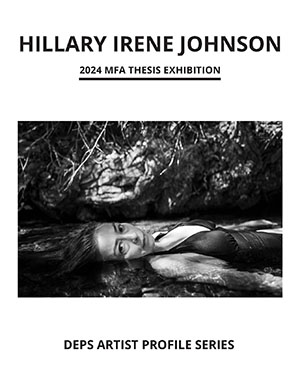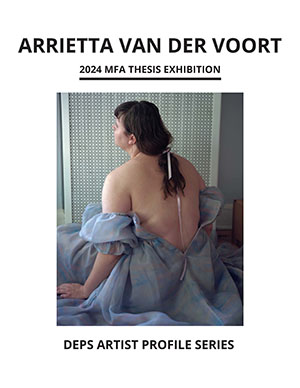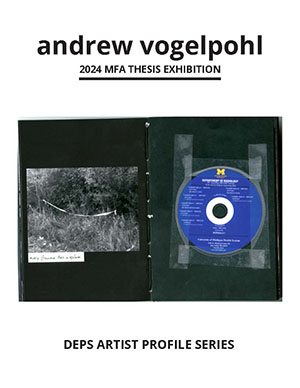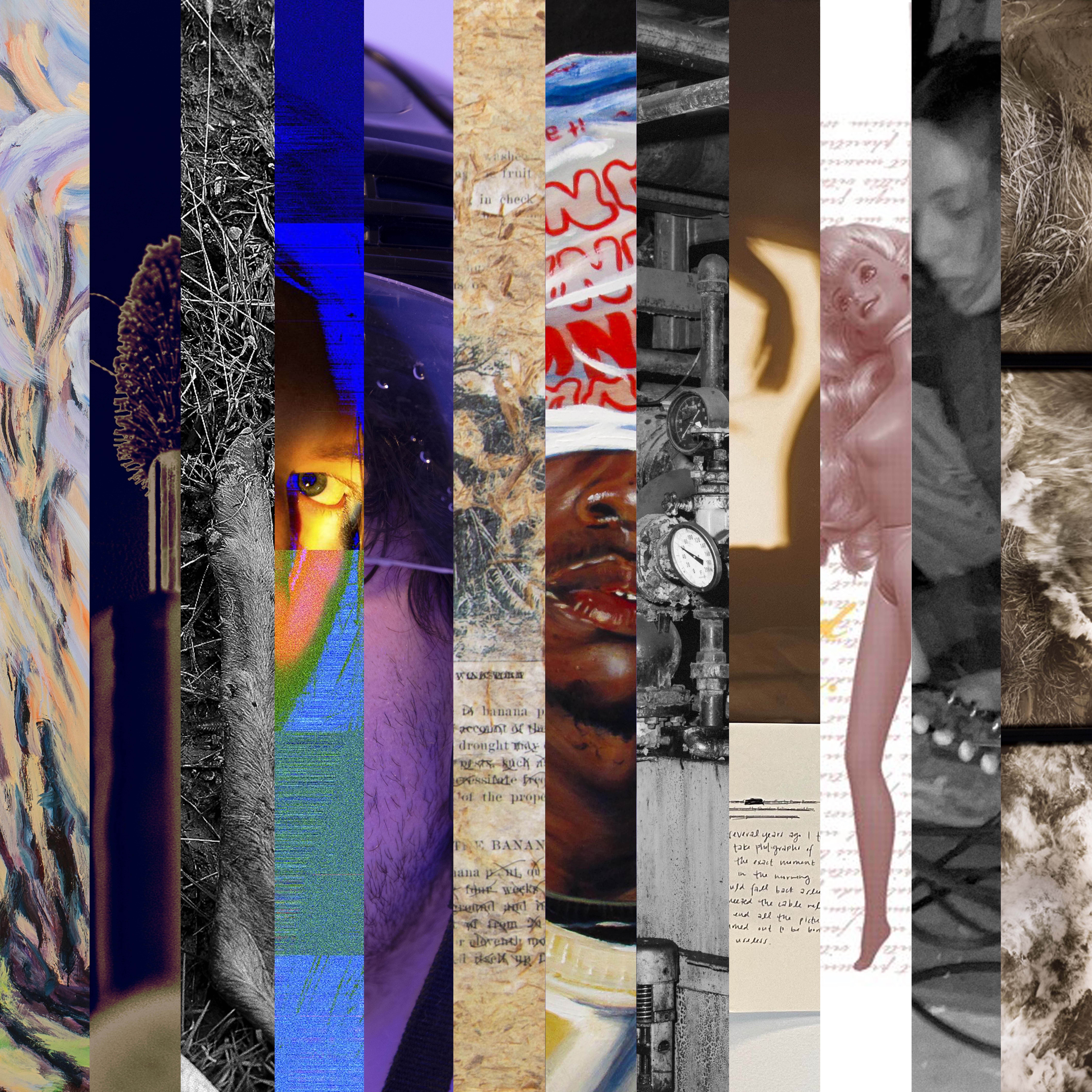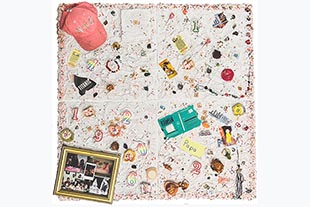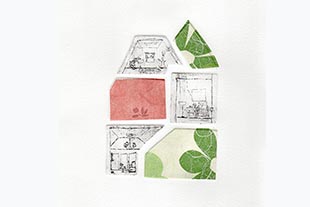2024 MFA Thesis Exhibition
May 6–28, 2024
Reception: Thursday, May 9, 5–8 p.m.
During the reception on May 9, there will be a performance by Giselle Mira-Diaz starting at 5:30 p.m.
The 2024 MFA Thesis Exhibition presents the thesis project by MFA candidates in Columbia College Chicago’s Art I Design and Photography Departments. This exhibition features work by Andre Barker Jr, Callie Clark Wiren, Adam MacArthur, and Grace Papineau-Couture in Columbia College Chicago’s Art I Design Department and Nora Benjamin, Noah Fodor, Eli Giclas, Ash Huse, Hillary Irene Johnson, Giselle Mira-Diaz, Arrietta van der Voort, and andrew vogelpohl in Columbia College Chicago’s Photography Department.
The exhibition, which includes paintings, prints, drawings, photography, sound, and installation, captures the extensive research, exploration, critical analysis, creative inquiry, productivity, practice, and achievement these emerging artists have maintained throughout their time in the programs. With varied approaches to subject matter, distinct methods of creation, and a unique blending of personal, political, and historical narratives, the artists in this show weave together the nuanced strands of the contemporary moment.
Columbia College Chicago is pleased to present the work of these artists and invites you to delve into the following projects during the run of the exhibition:
Andre Barker Jr presents Shifting the Narrative, a series of paintings that re-imagine “masterpieces” through a contemporary lens of Afro-Surrealism by showing the poetic weirdness of being Black in a world with an irrational fear, hate, and misunderstanding of Black people. This work explores the bizarre and often incongruent situations and emotions that come from navigating this white society as a Black person.
Sexual Heirlooms features Callie Clark Wiren's autobiographical lithographs and linguistic sculptures that delve into her experiences growing up in the LGBTQ+ community in the 1980s and 1990s, addressing trauma from discrimination and hate crimes, her own gender and sexuality development, and her relationship with her lesbian mother throughout her life. Constructed with layered images and texts, each lithograph centers on a photographic element, drawing viewers into smaller-scale elements
Adam MacArthur’s A Space for Being explores sensory engagement with temporal phenomenon in nature through gestural abstraction. Enlarging these phenomena illuminates environments, enhancing color and luminosity to evoke natural light and offering viewers a moment grounded in their own direct experiences, shaping their perception of their surroundings and fostering exploration of how these sensations influence their connection with the world.
Devastation/Negative Weaving is a haunting. In this work, Grace Papineau-Couture explores the interplay between drone, ritual, folk horror, superstition, and storytelling, experienced through both live performance and sound installation. Through found-object instrumentation and droning cassette tape loops, the project creates a sonic landscape that oscillates between growth and decay, challenging conventional perceptions of time and weaving a collection of diffuse narratives that blur the boundaries between performance, tape loop, and silence.
Nora Benjamin presents photographs and collages from her series Terms & Conditions, which interprets the relationship between social media, excessive e-consumerism in beauty markets, and the internet’s obsession with the pursuit of beauty. Through the colorized and abstracted documentation of her own beauty products, she characterizes the highly constructed nature of online identity and reinterprets the beauty product as an idol to be worshiped and feared.
Noah Fodor visualizes his conformity, the fear of desire that plagued him for so long, his fraught memories, and a questioning of the role that sports play in the creation of male identity. Drawing from his experiences playing ice hockey as a closeted athlete, Play Glamorous addresses the hyper-masculine world of hockey, where queerness is suppressed while emotional and physical intimacy among men is supported. Through his work, Fodor challenges societal norms, revealing a hidden homoeroticism that shaped his fears and desires.
Positioned between progress and collapse, Eli Giclas’s Counting After Lightning investigates the complicated relationship that we have with our environment through direct references to the extractive and refining industries that power our lives. His work points to the disarming awe he finds in these dispiriting realities as a means of exploring his anxiety about our uncertain future.
In DEADNAME, Ash Huse explores identity, queerness, and mental health through destabilizing photographic portraiture. Using music software to alter digital files and rephotographing images on screens, Huse investigates bodily metamorphosis, transcending traditional views in portraiture to convey the chaos of anxiety and depression attached to their queerness. Through this process, Huse delves into their gender dysphoria and nonbinary identity, showcasing how revealing and concealing can transform the self and serve as a site for self-discovery.
Hillary Irene Johnson is exhibiting pieces from two bodies of work, The Landmark Tree and Unity: Roots, Seaweed, Dinosaur Feathers, Snow in the Woods, Axons, Dendrites, and Human Beings. The Landmark Tree centers on a single tree teetering on the possibility of failure or life in a landscape of threat, in which the tree becomes a surrogate for us, in this Anthropocene age, facing survival, only tentatively. Unity: Roots, Seaweed, Dinosaur Feathers, Snow in the Woods, Axons, Dendrites, and Human Beings explores hope and tragedy, the possibility of beauty healing to wholeness through multisensory works including monumental work on hand-made paper and hand-built lightbox installations.
Giselle Mira-Diaz’s Rotten Fruit is a research project that peels away the surface to reveal the United Fruit Company's expansion into Central and South America. Touching upon the complex colonial past of these regions, this project aims to unearth forgotten historical narratives associated with American corporate dominance in Central and South America, notably the United Fruit Company's influence on labor, land, and the environment, including the tragic loss of life among Banana workers and their families and the environmental degradation resulting from banana monocultures. Mira-Diaz utilizes archival materials to create a contemporary response combining photography, film, performance, and paper-making.
Arrietta van der Voort presents work from Pale Blue, a diaristic mixed-media project that explores solitude in the domestic space and the relationship between home and self. Through multimedia wall collages comprising self-portraits, still lifes, journal fragments, and personal ephemera, van der Voort invites viewers to deeply engage with her introspective journey, prioritizing vulnerability, confession, and intimacy as she seeks to find meaning in the mundane yet intensely private experience of daily life lived alone.
andrew vogelpohl’s work, Digging in the Dark, embodies the concept of what the mind forgets, the body remembers. Through photographs and words capturing his body memories, he articulates a silent yet profound narrative of the art of survival. This work is a breathing record of past suffering, reminders, and maps of what a body can endure as it travels through life as well as a source of connection for those navigating similar experiences.
The 2024 MFA Thesis Exhibition is presented in conjunction with the Department of Exhibitions, Performance, and Student Spaces (DEPS), the Art I Design Department, and the Photography Department.
Columbia College Chicago Student Center, Fifth Floor
754 S. Wabash Avenue, Chicago, IL 60605
Gallery hours: Monday–Saturday, 9 a.m.–5 p.m.
All visitors must check in at the front desk for entry to the exhibition on May 9 and 10.
All visitors must RSVP for entry to the exhibition during other open hours. RSVP here.
DEPS is proud to present the DEPS Artist Profile Series featuring the artists of the 2024 MFA Thesis Exhibition. The DEPS Artist Profile Series is designed by Rachel Manlubatan and managed by Reina Sundara and Ziccy Delamarter. To view these interactive documents featuring artist interviews click on the images below.
